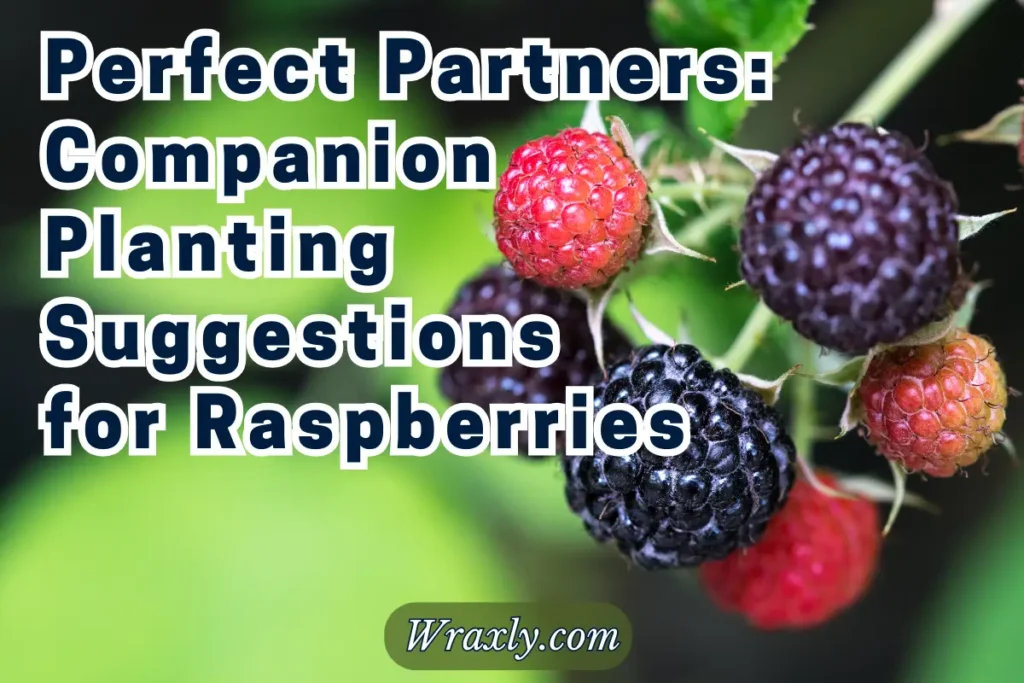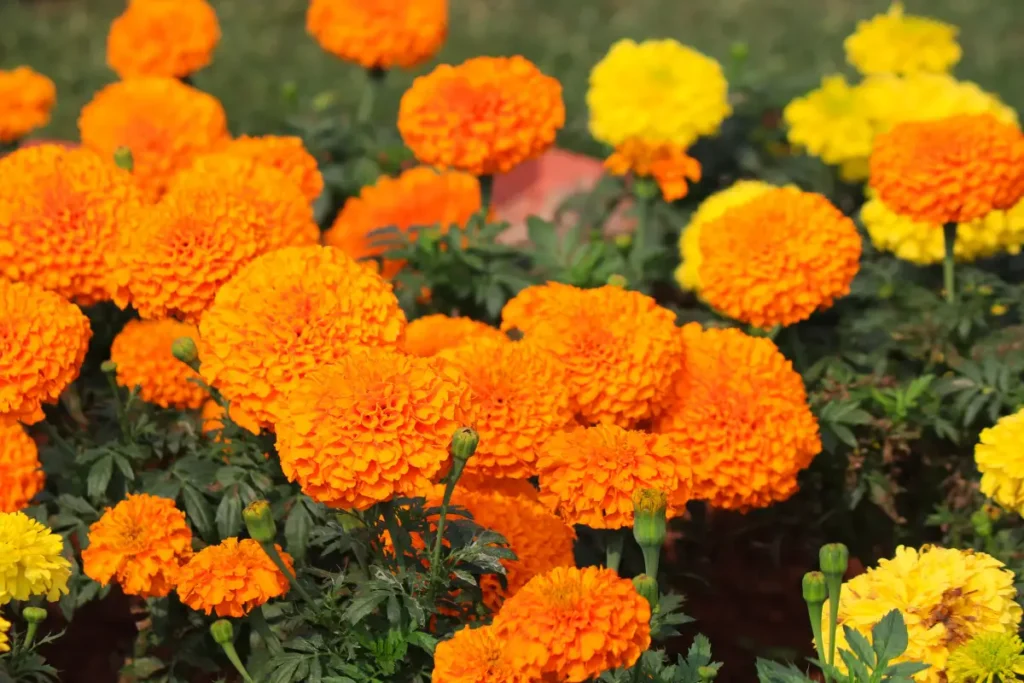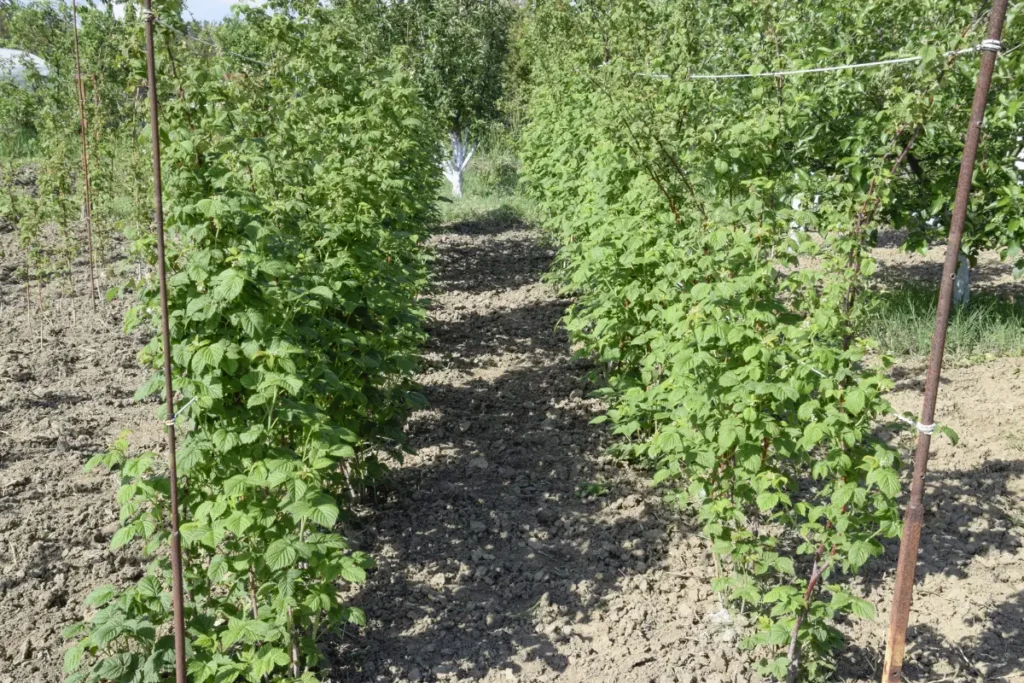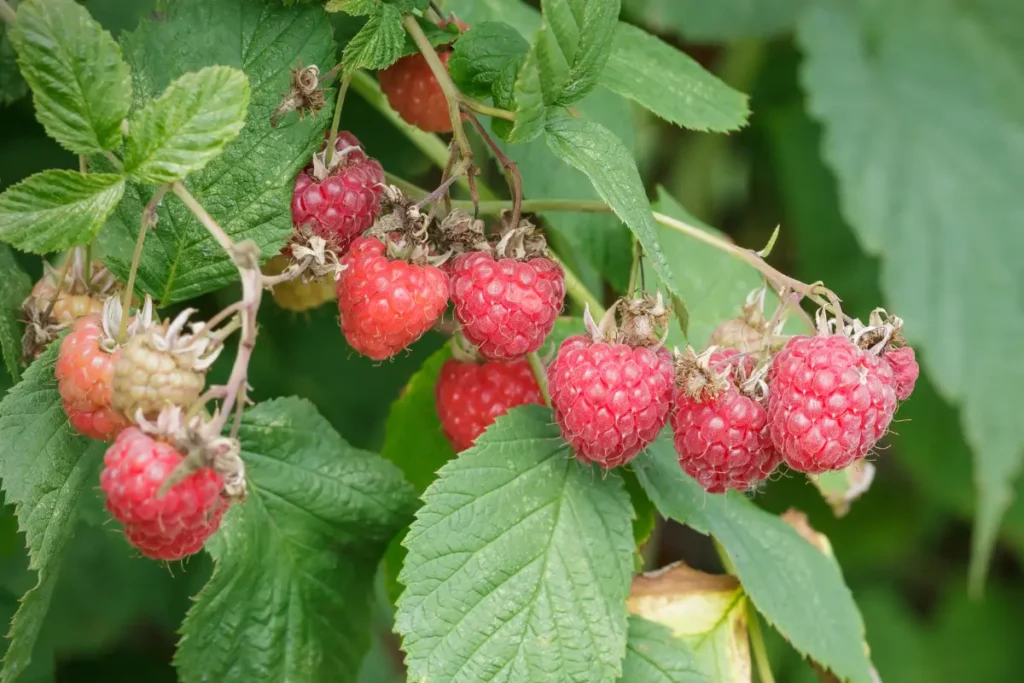Raspberries are a delightful addition to any garden, rewarding us with plump, juicy berries that burst with flavor. But what if we told you that there’s a secret to making your raspberry patch even more vibrant and productive? It’s called “Companion Planting.” By choosing the right neighbors for your raspberry bushes, you can unlock a world of benefits, from improved growth and fruit quality to natural pest control and enhanced flavors. In this guide, we’ll explore the art of companion planting for raspberries, revealing a tapestry of perfect partners that will not only enrich your garden but also your gardening experience. So, let’s dive in and discover how to create a harmonious and thriving raspberry ecosystem in your backyard.

- The Ideal Neighbors for Raspberries
- Planting Strategies for Raspberry Companions
- Tips and Tricks for Successful Companion Planting with Raspberries
- Troubleshooting Common Companion Planting Issues
- Beyond the Garden: Additional Benefits of Companion Planting
- Para leer más
- Final Thoughts About Reaspberry Companion Plants
The Ideal Neighbors for Raspberries
A raspberry garden can become more than just a source of delicious fruits; it can be a thriving, self-sustaining ecosystem when you choose the right companions. In this section, we will explore the ideal neighbors for your raspberry bushes, each contributing to the well-being and vitality of your berry patch.
A. Plants That Boost Raspberry Health
- Nitrogen-Fixing Legumes: There’s a hidden secret to raspberry success – nitrogen. These red jewels are nitrogen-hungry plants, and legumes like peas and beans are nature’s nitrogen-fixers. Planting them alongside your raspberries will enrich the soil, providing a steady source of this essential nutrient. It’s like a natural multivitamin for your raspberry bushes, ensuring they grow vigorously and produce larger, sweeter berries.
- Dynamic Dill: Dill isn’t just a culinary delight; it’s also a beneficial companion to raspberries. This aromatic herb attracts pollinators like bees and hoverflies, which, in turn, will increase your raspberry yield. Plus, dill’s feathery foliage offers some shade to the soil, preventing excessive evaporation and keeping your raspberry bed cool during the scorching summer months.
B. Natural Pest Control Companions
- Marigolds: The Pest-Repelling Marvels: Marigolds are a gardener’s best friend when it comes to pest control. Their vibrant, golden blooms not only add beauty to your garden but also deter nematodes, aphids, and other common raspberry pests. Interplant marigolds with your raspberry bushes, and watch as these cheerful flowers act as sentinels, protecting your precious berries from unwanted invaders.
- Nasturtiums: Flavorful and Pest-Deterring: Nasturtiums are like the Swiss Army knives of companion planting. Not only do they serve as a stunning ground cover with their vibrant orange and yellow flowers, but they also repel pests like aphids and whiteflies. Even better, their peppery leaves and flowers are edible and make a unique addition to your summer salads.

C. Enhancing Flavor and Aroma
- Companion Herbs: Basil, Thyme, and More: Imagine plucking raspberries and a handful of fresh basil or thyme from the same garden. These culinary herbs not only infuse your garden with delightful scents but also enhance the flavor of your raspberries. Interplanting herbs with your raspberries creates a sensory garden that’s as delightful to the nose as it is to the taste buds.
- Fragrant Flowers: Lavender and Roses: Beyond their aesthetic appeal, fragrant flowers like lavanda and roses contribute to the overall harmony of your raspberry patch. Lavender, with its calming scent, can help reduce stress for both the gardener and the plants. Roses, on the other hand, offer a touch of romance to your garden while also attracting beneficial insects like ladybugs and lacewings, which help control pests.
In this section, we’ve just scratched the surface of the ideal companions for raspberries. As you explore these options, you’ll not only enhance your raspberry harvest but also create a visually stunning, fragrant, and dynamic garden that invites pollinators and beneficial insects. Stay tuned as we delve deeper into the strategies for planting these companions effectively in the next section.
Planting Strategies for Raspberry Companions
Now that we’ve met some of the wonderful companions for raspberries, it’s time to discuss the strategies for planting them effectively. Companion planting isn’t just about placing plants haphazardly in your garden; it’s a thoughtful and strategic process that can make all the difference in the success of your raspberry patch.
A. Interplanting in Raspberry Beds
One of the most common methods of companion planting is interplanting, where you mix different plant species within the same garden bed. When it comes to raspberries, this strategy is particularly effective:
- Espaciado y disposición: While planting your raspberry bushes, leave adequate space between them. This allows for air circulation and ensures that each plant gets enough sunlight. In the gaps between the raspberry plants, insert your chosen companions strategically. For example, you can alternate raspberry bushes with marigold or nasturtium plants. This not only maximizes your garden’s potential but also adds a visual appeal with contrasting colors and foliage.
- Complementing Growth Habits: Consider the growth habits of both raspberries and their companions. Taller companions, like dill or sunflowers, can provide a natural trellis for raspberries, saving you the trouble of staking. Additionally, dill’s fine, feathery leaves won’t shade the raspberries excessively, allowing them to thrive.

B. Creating Harmonious Microclimates
Companion planting isn’t just about the plants themselves; it’s also about creating microclimates within your garden that benefit all species involved:
- Shade and Moisture Control: Some companions, like herbs, can provide shade and reduce soil moisture loss, helping raspberries thrive during hot summer months. Lavender, for example, can create a cool, aromatic shelter for your raspberries.
- Pest Attraction and Repulsion: Certain companion plants attract beneficial insects that prey on raspberry pests. Marigolds and roses lure ladybugs and lacewings, which can help control aphids and other nuisances.
C. Companion Planting in Containers
If you’re limited on garden space, don’t worry! Companion planting can still work wonders for your potted raspberry plants:
- Choose the Right Containers: Select large, sturdy containers for your raspberry bushes. Make sure they have adequate drainage to prevent waterlogged roots.
- Select Compact Companions: Opt for smaller companions like basil, thyme, or marigolds that won’t compete for space and nutrients. They can be placed in smaller pots around your raspberries or even tucked into the same container, provided they don’t overcrowd the raspberry’s root system.
By interplanting strategically and creating microclimates, you’ll encourage a harmonious environment for your raspberries and their companions. In the next section, we’ll explore the best practices for ensuring the long-term success of your companion planting journey with raspberries.
Tips and Tricks for Successful Companion Planting with Raspberries
Companion planting with raspberries can be a rewarding journey, but it’s essential to follow some tried-and-true tips and tricks to ensure your gardening efforts are a success. In this section, we’ll provide you with valuable insights and advice to make your raspberry companion planting experience enjoyable and fruitful.
A. Timing is Everything: Planting Schedules
- Sequential Planting: When adding companions to your raspberry garden, consider planting them at different times. Start by planting your raspberry bushes, and then introduce your chosen companions a few weeks later. This staggered approach prevents overcrowding and gives each plant space to establish itself.
- Seasonal Considerations: Be mindful of the growing seasons for both raspberries and their companions. Some plants may thrive better in the spring, while others are more suited for fall planting. Research the specific requirements of each plant in your companion planting scheme.
B. Understanding Companion Plant Compatibility
- Complementary Growth Patterns: When selecting companion plants, think about their growth habits. Choose plants that won’t compete for space, sunlight, or nutrients with your raspberries. Tall companions can provide natural trellises, while low-growing herbs can serve as ground covers.
- Compatible Nutrient Needs: Pay attention to the nutrient requirements of your companion plants. Some may have similar needs to raspberries, while others may be nitrogen-fixing or nutrient-enhancing plants. Plan your garden layout to accommodate these needs.
C. Mulching, Watering, and Fertilizing for Harmony
- Mulch Mindfully: Mulching helps retain soil moisture, suppress weeds, and regulate soil temperature. Use mantillo organico like straw or wood chips, but keep it away from the raspberry stems to prevent rot.
- Water Wisely: Ensure your raspberries and their companions receive consistent moisture. Companion plants can help conserve water by providing shade and reducing evaporation.
- Natural Fertilizers: Consider using natural fertilizers like compost and organic matter to nourish your garden. Avoid synthetic chemicals that can harm beneficial insects and disrupt the balance of your ecosystem.
Fertilizante orgánico recomendado
| Imagen | Título | Principal | Comprar |
|---|---|---|---|
 | Neptune's Harvest Fertilizante orgánico hidrolizado para pescado y algas marinas 36 0z | PrincipalElegible | Consultar mi precio en Amazon |
Arriba | Fertilizante de emulsión de pescado de Alaska 5-1-1 concentrado 1 galón (el embalaje puede variar) | PrincipalElegible | Consultar mi precio en Amazon |
 | Fórmula de suelo FoxFarm Liquid Nutrient Trio: Big Bloom, Grow Big, Tiger Bloom (paquete de 3 botellas de 16 oz) + tabla de canarios gemelos | PrincipalElegible | Consultar mi precio en Amazon |
 | Miracle-Gro Performance Organics Nutrición vegetal multiusos, 1 libra - Alimento vegetal totalmente natural para verduras, flores y hierbas - Aplicar cada 7 días para obtener mejores resultados - Se alimenta hasta 200 pies cuadrados. | PrincipalElegible | Consultar mi precio en Amazon |
 | Wiggle Worm 100% Humus de lombriz orgánico puro, 15 libras, fertilizante orgánico para plantas de interior, verduras y más, humus de lombriz de tierra listado por OMRI para ayudar a mejorar la fertilidad y la aireación del suelo | Principal | Consultar mi precio en Amazon |
 | Liqui-Dirt Nano Powder Alimento vegetal completo orgánico multiusos -18 Superalimentos equilibrados Mezcla de vitaminas minerales Microhongos y bioorganismos (50 galones) | PrincipalElegible | Consultar mi precio en Amazon |
 | Fertilizante para peces y algas marinas con certificación Omri de GS Plant Foods (1 galón) - Fertilizante orgánico para verduras, árboles, césped, arbustos, flores, semillas y plantas - Mezcla de pescado hidrolizado y algas marinas | PrincipalElegible | Consultar mi precio en Amazon |
By following these tips and tricks, you can create a harmonious and thriving raspberry garden with companion plants. With careful planning and thoughtful execution, you’ll enjoy a garden that’s not only productive but also visually stunning and teeming with beneficial wildlife. In the next section, we’ll address common challenges and how to troubleshoot them in your companion planting journey with raspberries.
Troubleshooting Common Companion Planting Issues
While companion planting can provide a host of benefits to your raspberry garden, it’s not without its potential challenges. In this section, we’ll address common issues that gardeners may encounter during their companion planting journey with raspberries and provide solutions to overcome them.
A. Dealing with Overcrowding
- Thinning Out: Overcrowding can occur when you’re too enthusiastic about adding companions. If your raspberry bed looks like a jungle, don’t hesitate to thin out some plants. This will provide more space and light for your raspberries and companions to thrive.
- Prune as Needed: Regularly prune and trim your companion plants to maintain a balanced garden. This prevents them from becoming too dominant or shading your raspberries excessively.
B. Managing Unwanted Guests: Weeds
- Mulch and Weed Barriers: Weeds can compete with your companions and raspberries for nutrients and water. Apply a thick layer of mulch around your plants to suppress weed growth. You can also use weed barriers or landscape fabric to prevent weeds from taking over.
- Hand Weeding: Regularly inspect your garden and remove any weeds by hand. This hands-on approach can help maintain a weed-free environment without the use of herbicides.
C. Companion Plant Diseases: Prevention and Solutions
- Disease-Resistant Varieties: Choose disease-resistant varieties of companion plants whenever possible. For example, select marigolds that are less susceptible to common diseases.
- Good Garden Hygiene: Proper garden hygiene can prevent the spread of diseases. Remove and dispose of any diseased plant material promptly to prevent the infection from spreading to your raspberries.
- Companion Rotation: Consider rotating your companion plants to different parts of the garden each season. This reduces the likelihood of disease buildup in the soil.
By addressing these common challenges and implementing these solutions, you can maintain a healthy and thriving garden that maximizes the benefits of companion planting for your raspberries. In the final section of this guide, we’ll explore the broader advantages of companion planting beyond your raspberry patch and its positive impact on the environment.
Beyond the Garden: Additional Benefits of Companion Planting
Companion planting is not only about the immediate advantages it offers to your raspberry garden but also the broader positive impact it has on the environment and the ecosystem as a whole. In this section, we’ll delve into the larger benefits of companion planting that extend beyond the boundaries of your garden.

A. Attracting Beneficial Insects to Your Garden
- Diverse Pollinators: Companion planting with a variety of flowers and herbs attracts a wide range of pollinators, including bees, butterflies, and beneficial wasps. These pollinators not only enhance raspberry pollination but also play a crucial role in supporting the pollination of other plants in your area.
- Predatory Insects: Many companion plants lure beneficial predatory insects such as ladybugs and lacewings. These allies help control garden pests naturally, reducing the need for chemical pesticides.
- Biodiversity: By diversifying the plant species in your garden, you contribute to local biodiversity. This, in turn, has positive ecological consequences, supporting a healthier ecosystem.
B. Sustainable and Eco-Friendly Gardening Practices
- Reduced Chemical Usage: Companion planting often reduces the need for chemical fertilizers and pesticides. This results in a more environmentally friendly garden that minimizes the impact of harmful chemicals on the soil, water, and wildlife.
- Enhanced Soil Health: The right combination of companion plants can improve soil structure and fertility, reducing the need for synthetic soil amendments. This promotes sustainable and natural gardening practices.
- Conservation of Water Resources: Companion planting can help conserve water through the shading effect of certain companions, reducing soil moisture evaporation. This aligns with eco-friendly water conservation practices.
- Lower Carbon Footprint: A well-designed companion planting system can reduce the need for excessive garden maintenance, such as mowing and trimming, leading to a smaller carbon footprint.
By practicing companion planting not only for your raspberries but throughout your entire garden, you contribute to a healthier and more sustainable environment. The positive impact ripples beyond your garden fence, benefitting your local ecosystem and the planet as a whole. As you embark on your companion planting journey, remember that you’re not just cultivating plants; you’re nurturing a thriving, interconnected world.
Para leer más
- Plantas complementarias de girasol
- When to Enjoy Fresh Rhubarb
- Cómo usar macetas de tela para la jardinería en macetas
- Plantas complementarias de arándanos
- Los aliados del jardín de espinacas: las mejores verduras, hierbas y flores para plantaciones complementarias
Final Thoughts About Reaspberry Companion Plants
Your journey through the world of companion planting for raspberries has revealed the artistry and science that underlie successful gardening. You’ve uncovered the magic of selecting the perfect companions to nurture not only your raspberry patch but also a thriving ecosystem. This practice intertwines your gardening know-how with the natural world’s wonders, enhancing the beauty and bounty of your garden.
Companion planting is a dynamic, ever-evolving adventure, where your garden becomes a canvas of life, color, and interconnectedness. As you venture into your garden with newfound knowledge and a passion for sustainable gardening, remember that your raspberry patch isn’t just a source of delectable berries; it’s a testament to the harmony between man and nature. This journey celebrates the continuous learning and adaptation that gardening offers, and as you tend to your raspberries and their perfect companions, you’ll create a garden that’s truly exceptional. So, go forth with a heart filled with the joy of nurturing life in all its forms, and let your garden flourish as a testament to the art of companion planting. Happy gardening and may your raspberries and their ideal partners thrive together, creating a garden that’s both beautiful and bountiful.

Darrell tiene una pasión por la jardinería que heredó de su padre. Ir aquí para leer más sobre la influencia que tuvo su padre en su amor por la jardinería. Si desea enviar un mensaje rápido a Darrell, visite su página de contacto aquí.

![Cómo regar las plantas de interior [Cuidado de las plantas 101]](https://wraxly.com/wp-content/uploads/2021/03/How-to-Water-Indoor-Plants-Plant-Care-101-1200-1024x576.webp)

![Cultivo de plantas a partir de esquejes [Una guía sencilla]](https://wraxly.com/wp-content/uploads/2021/03/Growing-Plants-from-Cuttings-A-Simple-Guide-1200-1024x576.webp)